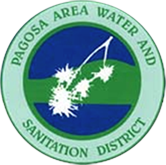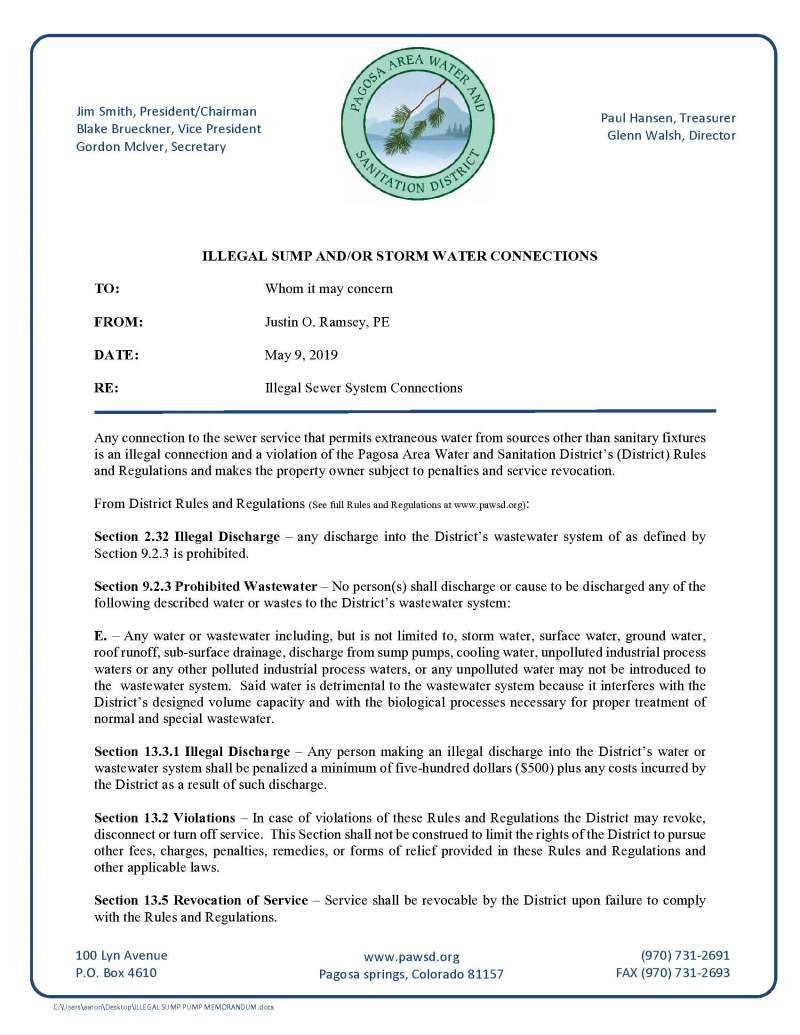Inflow and Infiltration (I & I)
It is ILLEGAL to tie a foundation drain, raingutter and/or sump pump to your home or business sewer discharge line of PAWSD sewer main.
What are Inflow and Infiltration?
Inflow and infiltration, or I & I, are terms used to describe the ways that groundwater and stormwater enter into dedicated wastewater or sanitary sewer systems.
Why is inflow and infiltration a problem?
Sanitary sewer systems are designed to carry wastewater from toilets, dishwashers, sinks, or showers in homes or businesses. I&I add clear water to sewer systems, increasing the load on the systems.
Once the sanitary sewer systems have reached capacity or become overloaded, wastewater flows at much higher water level than normal and if sanitary fixtures or drains are below this overload level, water will flow backward through the sanitary sewer pipe, flooding basements or households and causing manholes to pop open releasing wastewater onto the street.
I&I reduce the ability of sanitary sewer systems and treatment facilities to transport and treat domestic and industrial wastewater. As a result of the inflow and infiltration, wastewater treatment processes are disrupted and poorly treated wastewater is discharged to the environment.
What are the costs of I&I?
There are various costs associated with inflow and infiltration including sanitary sewer system overflow, with wastewater treatment and transportation facilities, and funding opportunities. Overflow costs are associated with road and waterway cleanup and the potential for fines if the overflow problem is not corrected. Additionally, sewer system backups into basements or households can result in litigation and potential liabilities for the responsible city or agency. Eventually, new homes or businesses may not be allowed to connect to the sanitary sewer system if the inflow and infiltration issues are not corrected, increasing costs to residents as a new sanitary sewer systems are installed or potentially lowering housing values due to the inability to develop land for future growth.
Inflow and infiltration costs water treatment facilities and consumers large amounts of money in water treatment operating expenses. All water entering a water treatment facility must be treated as wastewater causing an increase in operating costs proportional to the amount of clean water entering the sanitary sewer system due to inflow and infiltration.
Minimizing inflow and infiltration can also increase the lifetime-capacity of a treatment facility and wastewater transportation system. The pumps that are involved with wastewater treatment and transport operate 24 hours a day seven days a week; however they must work harder as the sewer system’s water level load increases. This puts an unneeded strain on the pumps and shortens the life expectancy of these expensive pumps.

